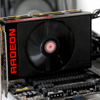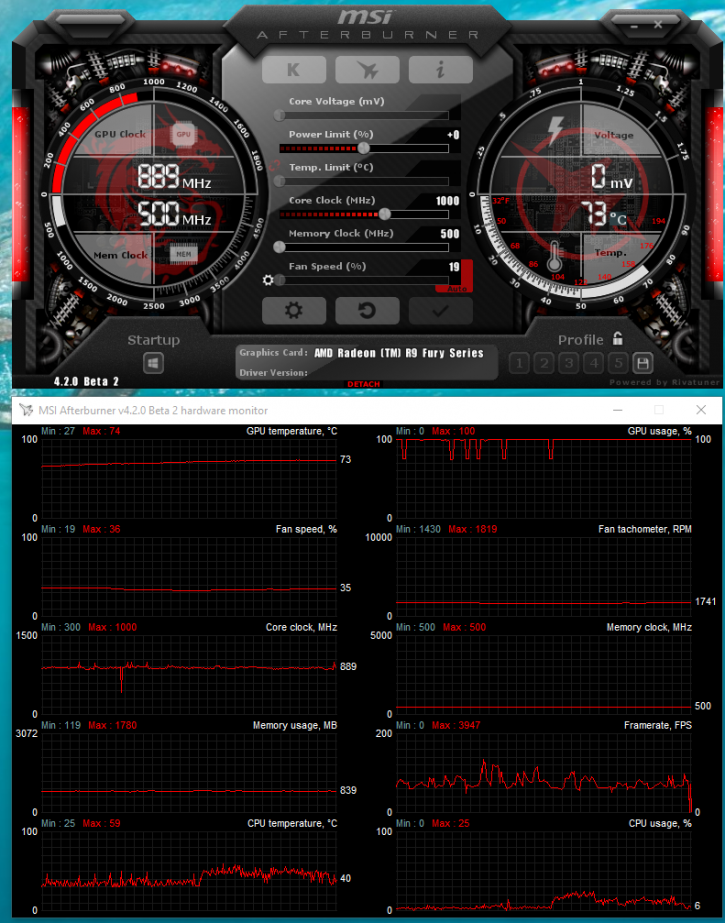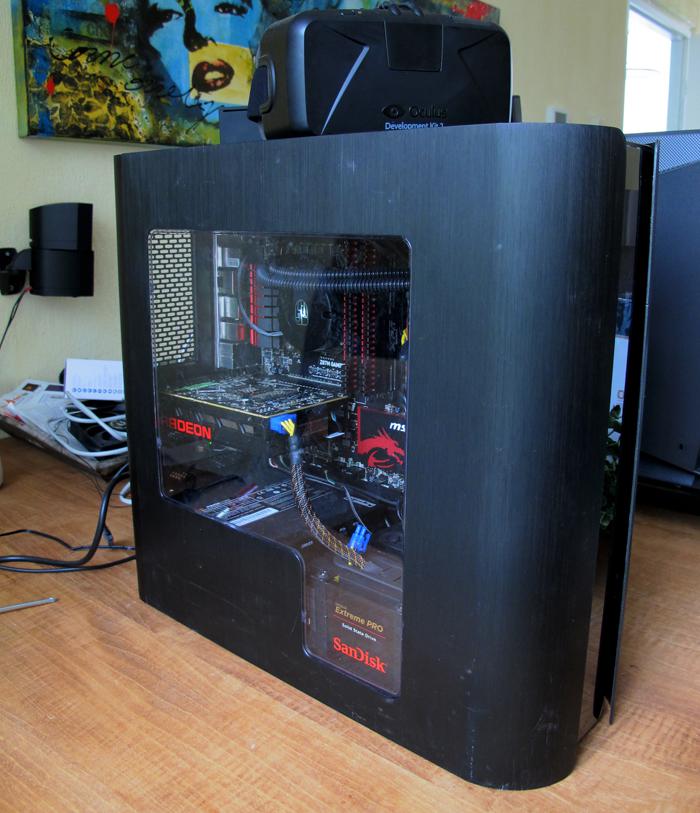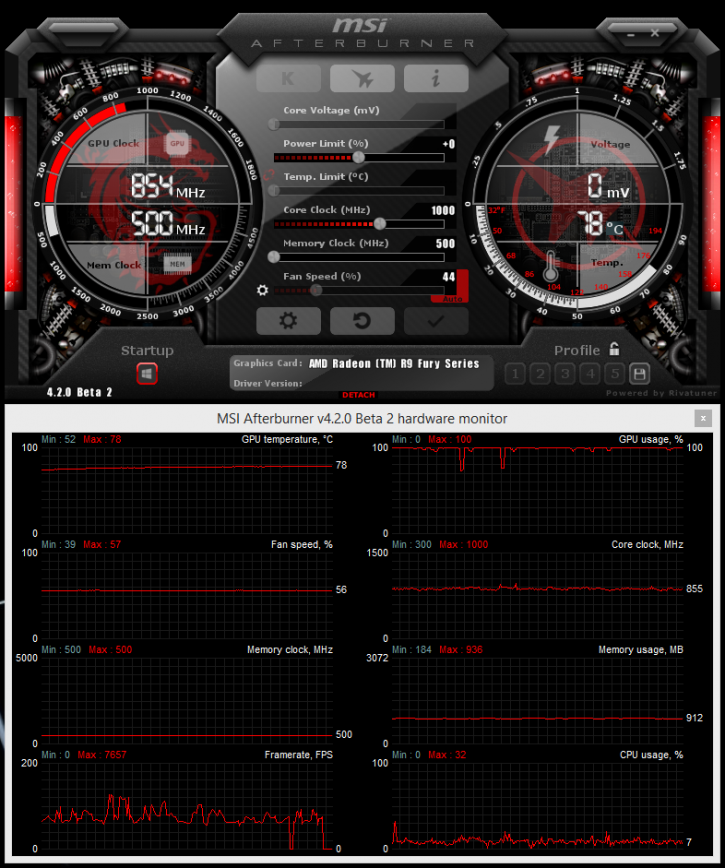Graphics card thermal behavior
Thermal behavior
On this page I wanted to show you some thermal behaviour based on an open and closed system. Normally we measure based on an open test-bench. The results often are really close to a normal chassis that is properly ventilated. Being in such a small form factor chassis, that dynamic changes. Small chassis often are much harder to keep cool on the inside as space and thus airflow is restricted. We will be focussing on two things, the temperature in the system and, in relation to that, thermal throttling as this feature is key to this specific product.
So, above you can see the Radeon R9 Nano hard at work on the open test-bench. Our temperatures stick at roughly 73~74 Degrees C. At this temperature the thermal throttling is minimal for a card like this, we see GPU clock frequencies hover in the 875 to 920 MHz range. This number is different per gaming title and workload. The heavier the game will be on the GPU the lower the clock frequency and inevitably the overall framerate.
- So here we have 73 Degrees C - Throttling base clock at 875~920 MHz.
We now move the card into a pretty mediocre cooled Micro ATX chassis. This setup has one slow RPM intake fan and the exhaust fan is actually the LCS radiator, with the fan spinning at LOW RPM to keep noise levels as low as possible.
To give you an example, this PC stressed has very average airflow, if I open up the side panel and stick my hand inside the PC the inner ambient temperature there is a good notch higher then my body temperature. So that can be considered to be a warm ambient temperature.
So we again start to stress the PC in a similar fashion, this round the card seated in a closed and mediocre cooled mITX/Micro ATX chassis. BTW to get an idea of how small it really is, that chassis measures (WxHxD) 16 x 42 x 46cm.
As you can see, the card is now running hotter and passes the 75 Degrees thermal limiter that AMD has set. The fan now cranks up making more noise to compensate, but the temps are kept steady at a maximum of 77~78 Degrees C, which is still OK. At that temperature we see the thermal throttling a little more active as it now hovers in the 850 to 880 MHz range.
- Result: 78 Degrees C - Throttling base clock at 850~880 MHz.
Honestly, not bad at all. However, the downside in a closed small chassis with average airflow is that the noise level increases whereas in a properly cooled airflow environment this card was totally silent.




